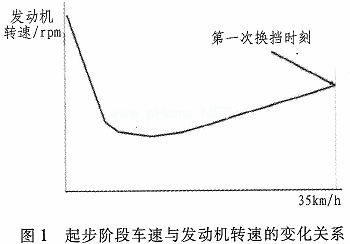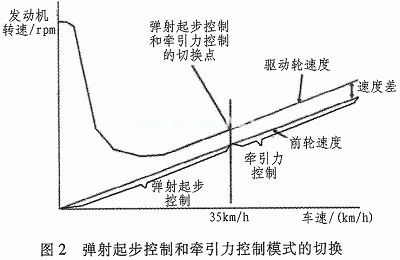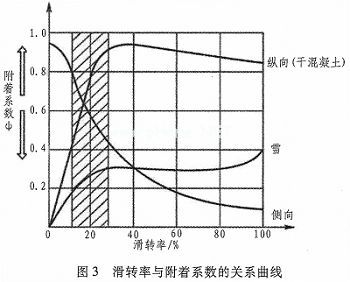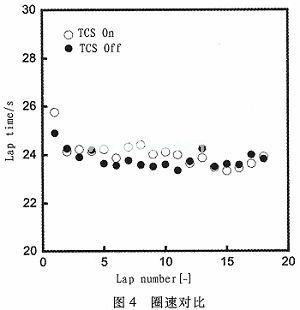The China University Student Formula Car Competition ("China FSC") is a car design and manufacturing competition attended by students from colleges and universities or automotive related majors. In this competition, some foreign teams (such as Munich Racing Team, Stuttgart Racing Team, etc.) have taken the lead in using traction control systems, as well as upshifting and other technologies, and played an important role in the fierce competition. The domestic Tongji University team also adopted the same technology and showed advantages in domestic competitions. Therefore, for the traction control of the engine and the start of the ejection, the research on the upshift and the off-fire has played a very important role in the development of the car. This article refers to the address: http:// 1 Ejection start control research 1.1 Principle of ejection start control The fourth-generation racing gear adopts the 1-N-2-3-4-5-6 serial structure. The game basically starts with the second gear. The specific steps are to hang the second gear first, pull the clutch open, and then ignite. Drive the car, then slam on the throttle to pull the engine speed up. After the predetermined speed, suddenly release the clutch and make it instantaneously combined. At this time, the engine speed drops rapidly, but as the car starts, the engine speed starts to rise again until the first time. Shifting, during this period, the speed of the car is gradually increasing, the specific changes are shown in Figure 1. Due to the very high engine speed in the short time of the second gear, the starting speed of the car is very low, so the driving wheel will have a serious slip phenomenon. Therefore, it is necessary to appropriately limit the engine speed to make full use of the adhesion provided by the ground to exert excellent acceleration performance. In order to limit the engine speed, the launch control function of the M800ECU (engine control unit) is used. 1.2 Implementation of ejection start control In order to achieve the ejection start control function, four wheel speed sensors are required. The front wheel two sensors are responsible for monitoring the front wheel speed as the true speed of the car, while the rear wheels are responsible for monitoring the drive wheel speed through the front and rear wheel speeds. By comparing the data, you can calculate the slip rate of the car. In terms of software, the M800ECU has developed this function, which can be activated by setting the relevant parameters. After the basic setting is completed, the target value of the ejection start control, that is, the relationship between the vehicle speed before the first shift (front wheel speed) and the engine speed, is also set. According to the results of last year's racing test, the speed of the first shift of the 75 m straight line was 35 km/h. This year, the main reduction ratio of the car is 3, and the transmission ratio of the second gear of the Kawasaki engine transmission is 2.2, so the total gear ratio from the engine to the tire in the second gear of the car is 6.6, which can calculate the corresponding speed of each car. Engine speed, combined with the relationship between slip rate and adhesion coefficient, can be determined at each speed Obtain the engine speed for the maximum longitudinal adhesion factor. As shown in Fig. 2, when the vehicle speed reaches 35 km/h, the ejection start control ends, and immediately enters the traction control mode. Table 1 shows the setting of the vehicle speed and target speed calibrated to the ECU during the ejection start control process. 2 Traction Control Research 2.1 Principle of traction control The principle of traction control is similar to the ejection start control. The difference is that the ejection start control is controlled by the target speed of the engine, and only the front wheel speed is needed. The traction control is controlled by the target slip rate, so the wheel speed needs to be driven at the same time. And front wheel speed. The motion state of the driving wheel can be divided into two forms of rolling and sliding, and these two forms often exist at the same time. In the case of the same ground conditions, as the engine output torque increases, the wheel rolling component will be less and less, and the slip component will be more and more. It can be seen from Fig. 3 that the slip ratio is preferably about 30% when considering the longitudinal force alone, and the smaller the slip ratio is, the better the lateral stability is. It can be seen that the ideal slip ratio needs to take into account both the longitudinal and lateral directions. The slip ratio is about 15% (shaded in the figure) and the car has a good longitudinal and lateral adhesion coefficient. 2.2 Implementation of traction control The traction control system controls the drive wheels by means of engine output torque control, drive wheel braking force control and differential lock control. The engine output torque can be adjusted in three ways: throttle opening adjustment, reducing or cutting the fuel injection amount, reducing the ignition advance angle or cutting off the ignition. For the specific situation of the car, only the way of oil cut or fire break can be used. The M800 ECU has developed this function. The specific settings are shown in Table 2 (slip calculation mode: 0: traction control and ejection start control off; 1: front wheel speed versus drive wheel speed; 2: slip voltage channel; 3: drive wheel speed change rate; 4: speed change) Rate; 5: gear position. For the start of the ejection, only 1 is required to set the control parameters). After the basic setting is completed, the target slip rate of the traction control is also set, as shown in Table 3. When the vehicle speed reaches 35 km/h, it will switch to the traction control mode. After that, the ECU will calculate the slip rate in real time using the wheel speed signal transmitted from the four wheel speed sensors, and compare it with the target slip rate, using PID control to drive. The roller slip rate remains within the target value range. On the other hand, in order to lose excessive power due to a fire break when the slip rate exceeds the target value, especially when the low speed or the throttle opening is relatively small, it is necessary to set it under different working conditions. The maximum reduction in engine power. As shown in Table 4, 0% means that no power is reduced, that is, continuous fire, and 100% means that all power is cut off. Figure 4 shows that on the same self-made track, the same driver who has mastered the car and the track has the same initial fuel load, the same chassis tuning parameters, similar temperature and climate at the time, and the surface condition of the track is basically unchanged. The measured lap speed is compared with the TC without the TC. It can be seen intuitively that after setting the TC, the lap time of the car has been significantly improved. Dc Relay,Dc Power Relay,Condenser Contactor,Voltage Protection Relay NanJing QUANNING electric Co.,Ltd , https://www.quanningtrading.com





